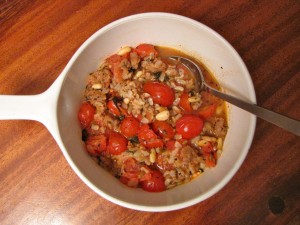Most of the studies on diet effectiveness one reads are focused on the more broad aspect of the diet. Specifically, there are many studies out there on the Mediterranean Diet, the Western Diet, the Paleo Diet, et cetera, however, what is less often studied is specific

aspects within an individual diet, and how that specific aspect may or may not affect the health of the consumer.
A new study published in the journal Annals of Internal Medicine aimed to assess a diet based on the complex recommendations by the American Heart Association (AHA) compared with a more simple diet focused on high-fiber foods on adults with metabolic syndrome.
240 adults in the Worcester, MA area with metabolic syndrome were recruited for this study. Participants had BMIs between 30 and 40 kg/m2 and were between the ages of 21 and 70. Participants were mainly women, white, and well-educated.
Participants were randomly assigned a high-fiber diet or a diet based on AHA recommendations. Caloric intake for meals was determined to be appropriate for weight loss for each participant.
Weight and height was measured at the beginning of the study, and then at 3, 6, and 12 months post diet intervention.
Other information collected at each visit included: use of medications, use of dietary supplements, adherence to the study diets, fasting glucose levels, fasting plasma insulin levels, hemoglobin A1c, lipid profile, high-sensitivity C-reactive protein levels, interleukin-6 levels, tumor necrosis factor-α receptor 2 levels, and blood pressure.
Important Findings:
- After 12 months, average weight loss for the high-fiber group was 2.1kg, while average weight loss for the AHA group was 2.7kg. These differences were not found to be significant.
- 8 participants developed diabetes during the study (7 in the high-fiber group and 1 in the AHA group).
- Reduction of caloric intake was greater in the AHA group than the high-fiber group.
- Blood pressure and all metabolic measurements were similar between the two groups throughout the study, with both groups showing improvements.
The results of this study suggest that following a complex diet based on AHA recommendations is statistically similar to a more simple diet of just increasing the amount of fiber consumed. Technically, the amount of weight lost following the AHA diet was greater than the high-fiber diet, however, the loss was not statistically significant.
It is important to note that the number of calories consumed in the

high-fiber group was higher, so it would make sense that the participants in that group would not lose as much weight. Keeping caloric intake constant between the two groups may have provided a more accurate comparison, but that was not done in this study.
Another caveat to this study is that the participant pool was mostly white women who are well-educated, making generalizations to other groups difficult (if not impossible).
In the end, the authors concluded that the results of this study suggest that a simplified dietary approach (such as increasing the fiber in one’s diet) may be just as beneficial as a more complicated diet regime, making weight loss and improvements in metabolic measurements more accessible and easier to follow for the general population.
Source:

